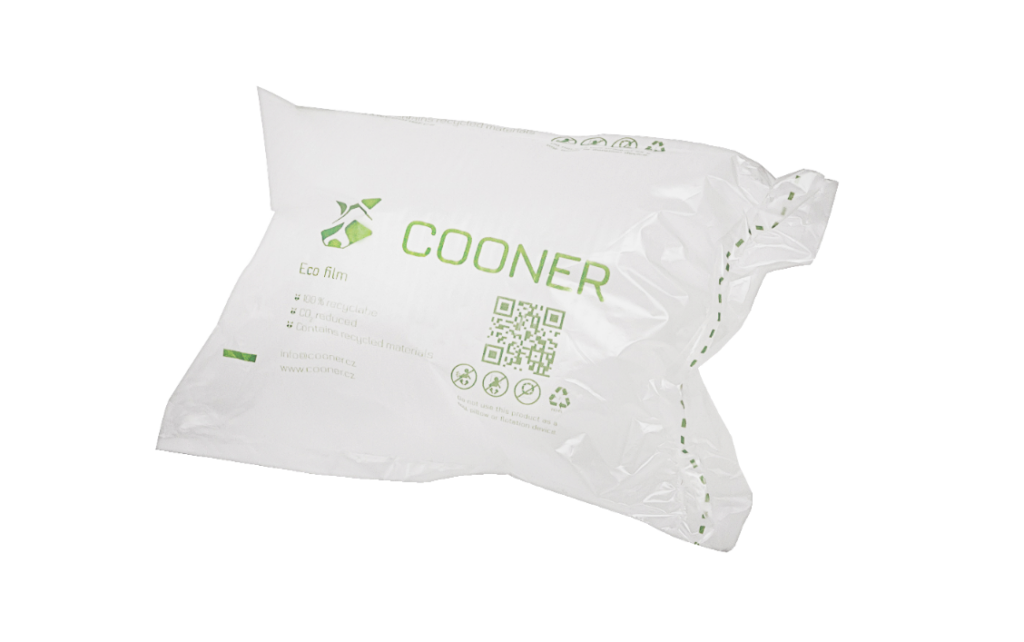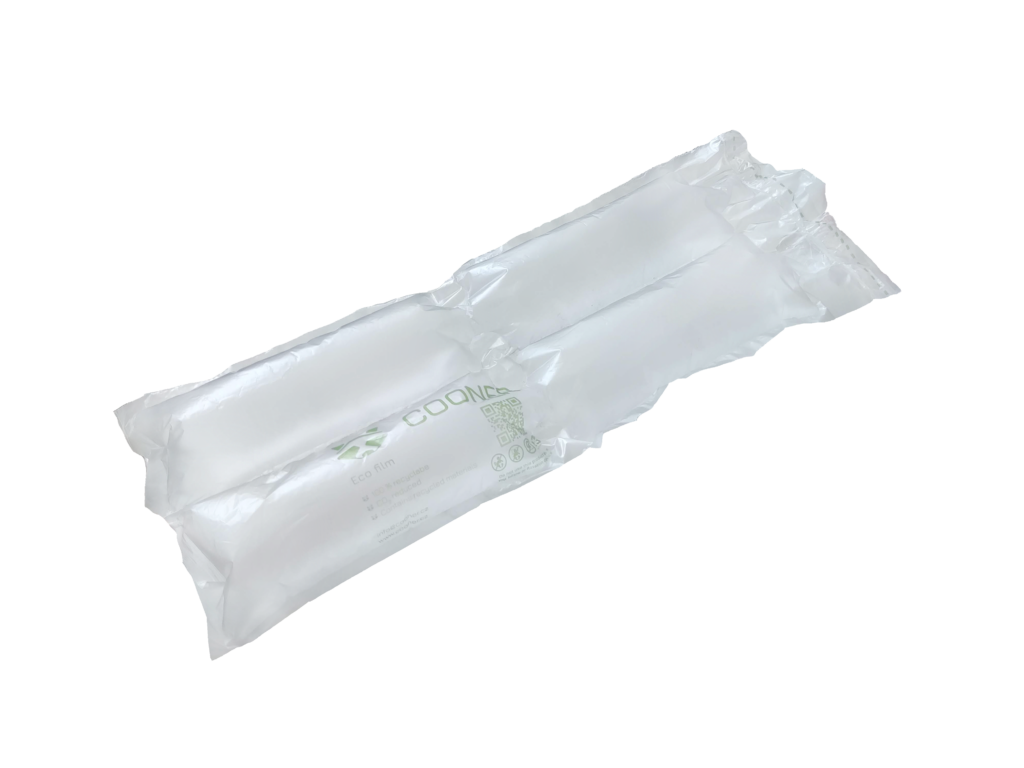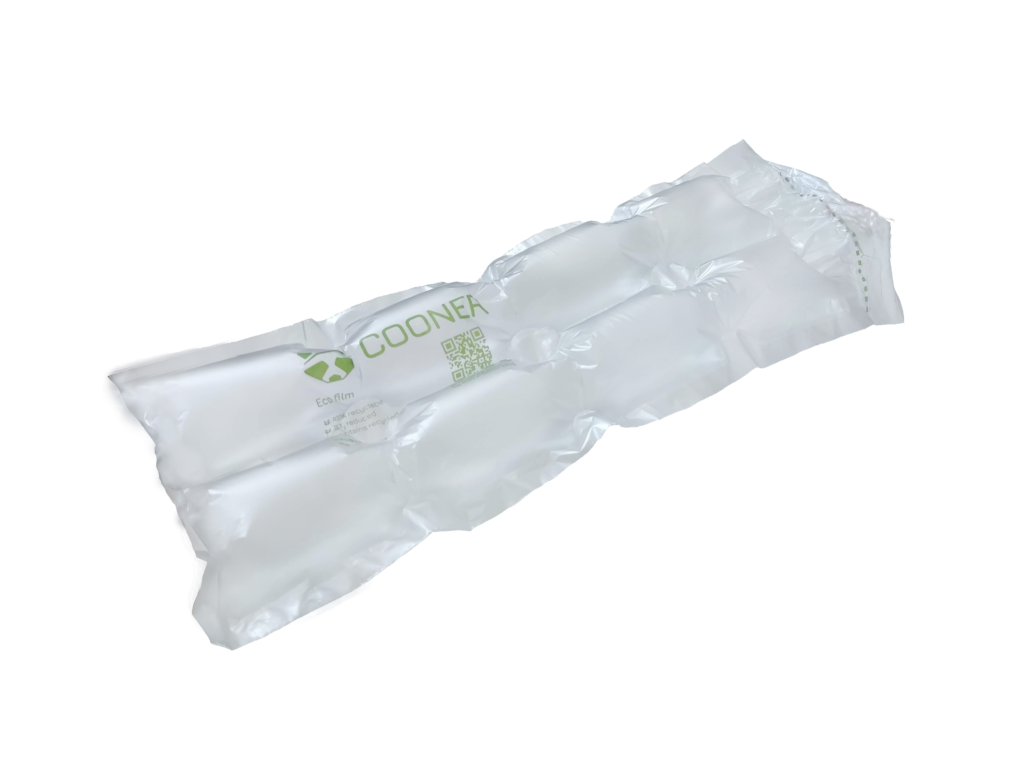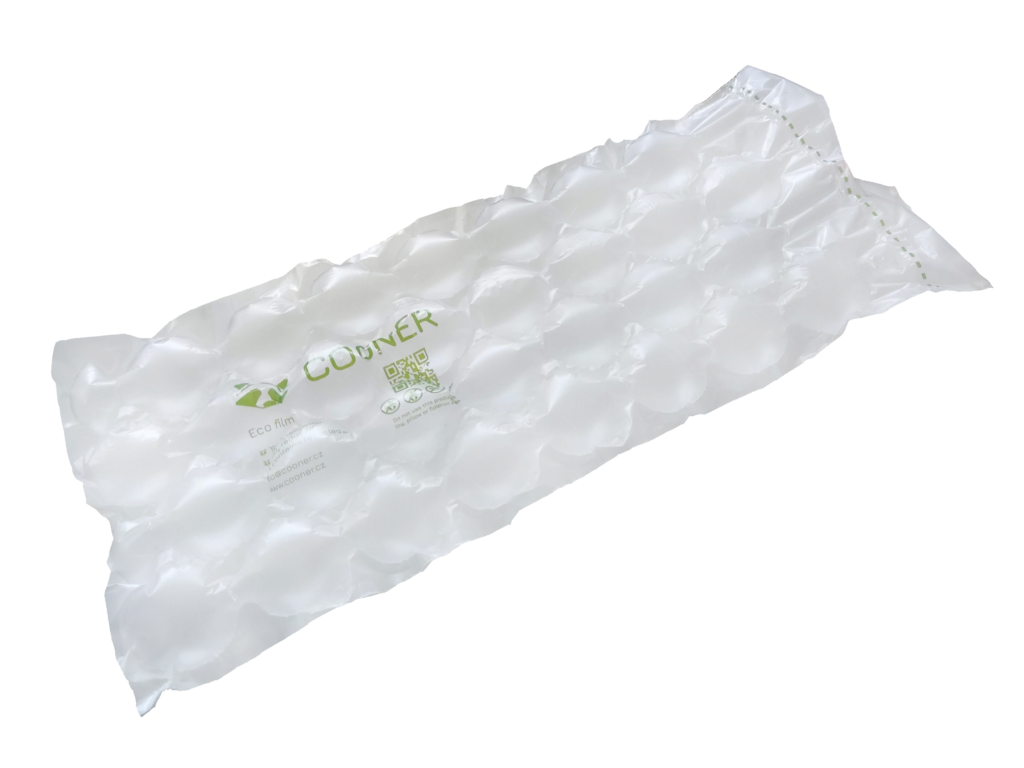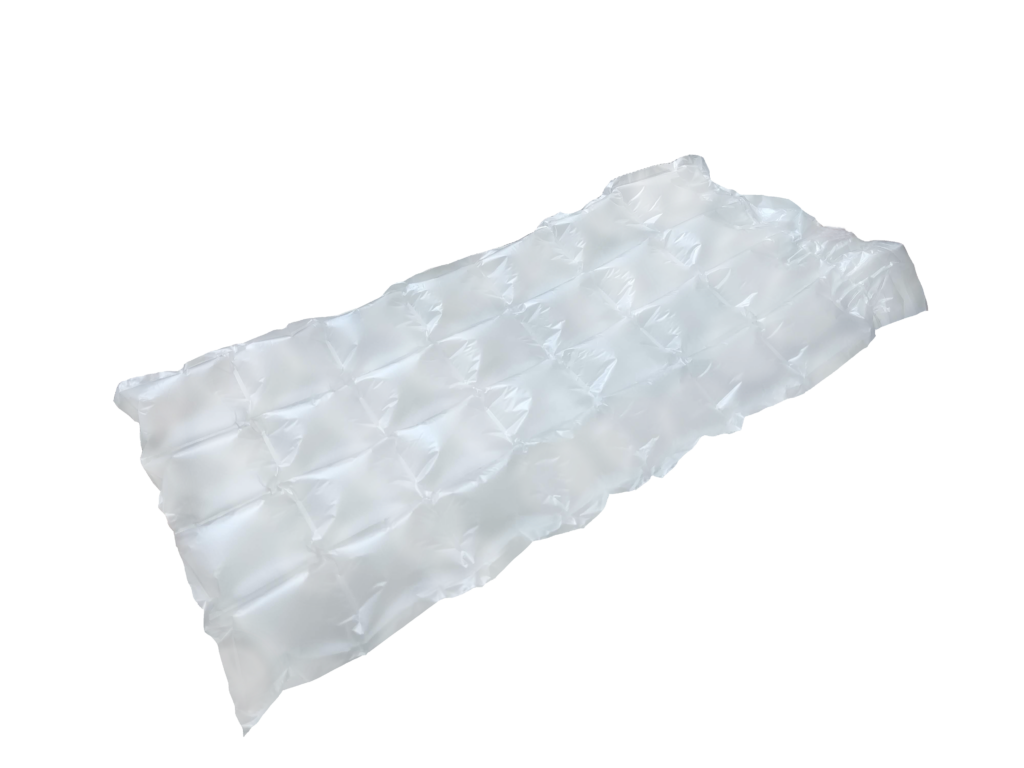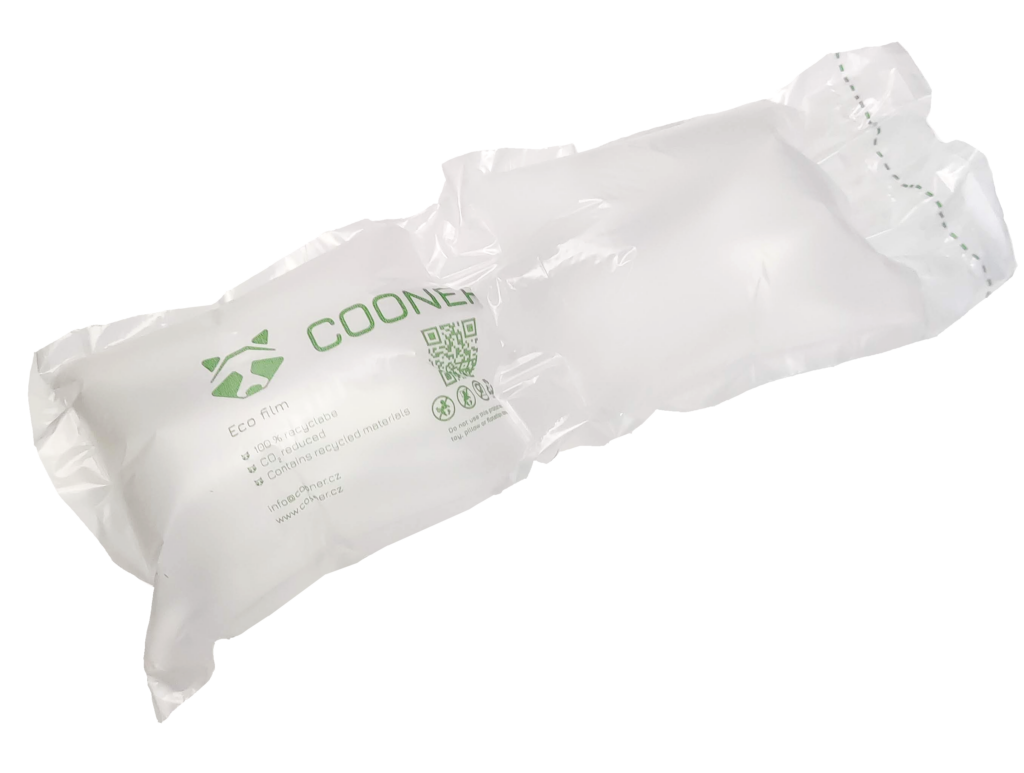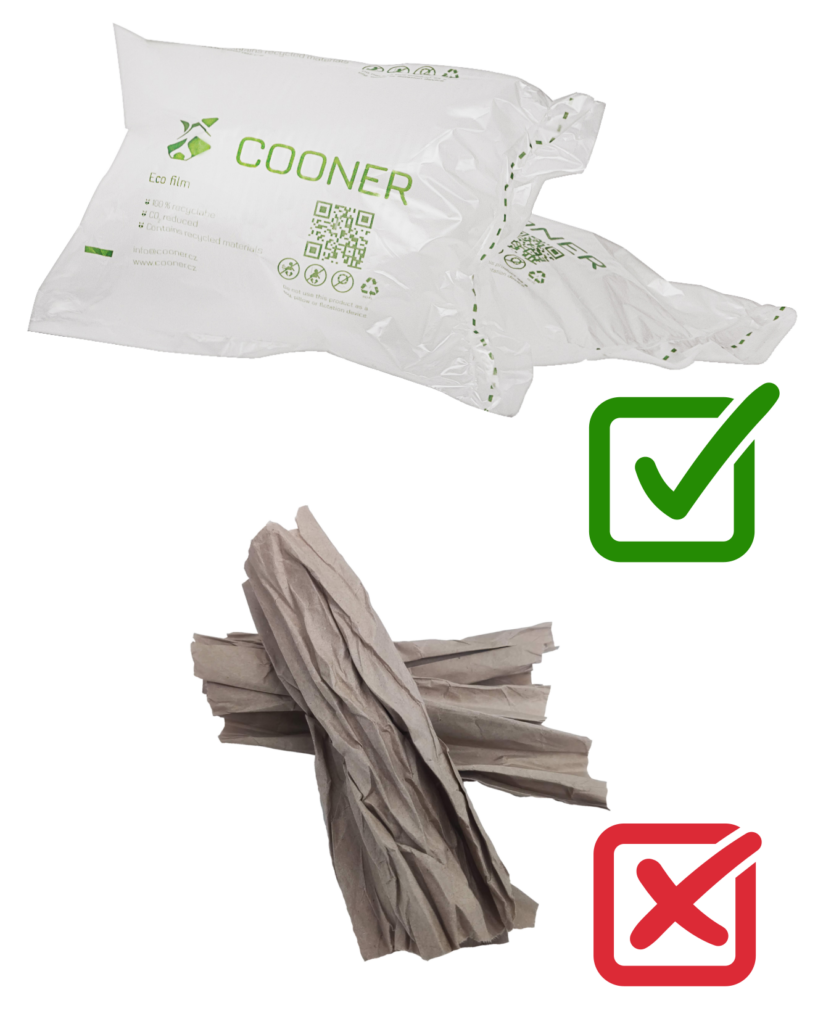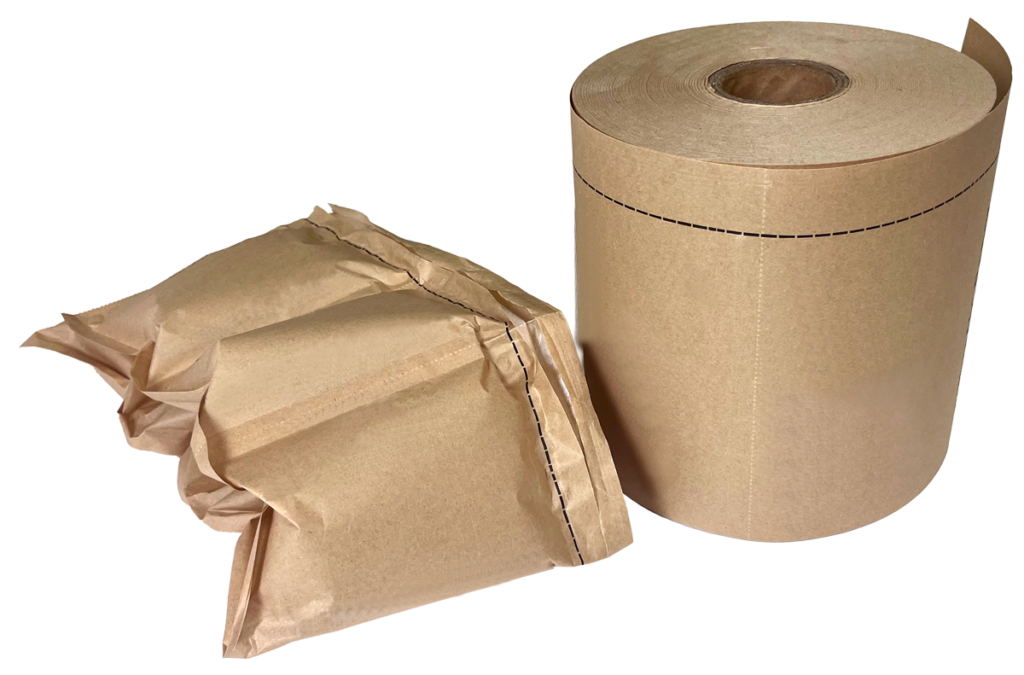We are the exclusive representative of activaTec for the Czech and Slovak Republics.

What are air cushions?
What are the types of air cushions?
Air cushions are divided into two main groups: single-chamber and multi-chamber.
Single-chamber air cushions are primarily used to fill empty space in packages. They are typically produced with a width of 200 mm and lengths of 100, 130, or 200 mm. Individual cushions are separated by perforations for easy tearing to the length needed for a specific package.
The main function of multi-chamber cushions is product protection. These cushions consist of smaller chambers connected in sections, similar to an ice cube bag. The standard width is 400 mm, with length and shape varying depending on the specific type. The most popular types by far are the 4-tube and 7-tube cushions.
Zdaleka nejpopulárnější jsou polštáře 4 tube a 7 tube.
2 Tube
- Width: 400mm
- Lenght (perforation): 150mm
- Cushion height: approx. 40mm
- Purpose: filling empty space / product protection
7 Tube
- Width: 400, 800mm
- Lenght (perforation): 170mm
- Cushion height: approx. 19mm
- Purpose: product protection
7 Tube Square
- Width: 400, 800mm
- Lenght (perforation): 190mm
- Cushion height: approx. 23mm
- Purpose: product protection
What materials are used?
The main materials used for the production of air cushions are LDPE (Low-Density Polyethylene) and HDPE (High-Density Polyethylene). They differ in density, strength, temperature resistance, and transparency. LDPE is softer and more flexible than HDPE. It also has a lower melting point (115°C) and is more transparent. In contrast, HDPE is rigid and durable, offering greater chemical resistance. Its higher melting point (135°C) allows it to withstand higher temperatures than LDPE.
Previously, the rigidity of HDPE was a disadvantage when used as a material for air cushions. However, today HDPE can be manufactured to overcome this limitation. The result is a material that offers higher strength, temperature resistance, and sufficient flexibility to prevent bursting or deformation under pressure.
What are the ecological alternatives?
Air cushions made of paper without hidden plastics!
Our air cushions made from recycled paper are truly eco-friendly! They do not contain the commonly used inner plastic layer that prevents both recycling and composting.
The air barrier is formed by a layer of cornstarch.
This filling is the most efficient use of paper as a protective packaging material for your products.
What machines are used for preparing pillows?
Air fillings are supplied as standard in the form of film on a roll with a specific final shape and perforations for easy tearing off of individual pillows. This film is then inflated and prepared for use at the packaging site using a special compact machine.
We currently offer two types of machines.
BP2000
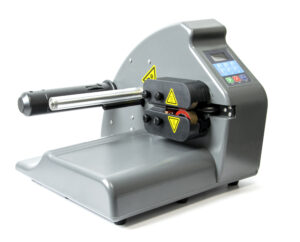
- Purpose: smaller companies
- Speed: up to 5m/min
- Rolls lenght (200/400mm): 700/450m
- Weight: 4kg
- Dimensions (l,h,d): 305,400, 280mm
BP4000
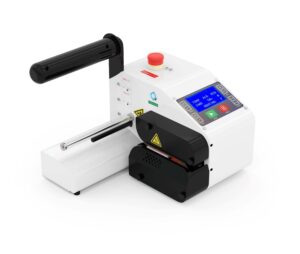
- Purpose: medium and bigger companies
- Speed: up to 15m/min
- Rolls lenght(200/400mm): 700, 1500, 2000/450m
- Weight: 6kg
- Dimensions (l,h,d): 315,300, 315mm
What are the possibilities for machine integration?
Integrating the machine into the packaging workplace is becoming very important, especially for larger companies. Time savings combined with greater user comfort are another step toward automating the packaging process. The operator always has packaging material conveniently at hand.
The technical solution is always chosen based on the specific workplace.
Ducting

- The machine is electrically extended to the working position.
- Convenient solution > just press a button
- Silent solution
Potrubí
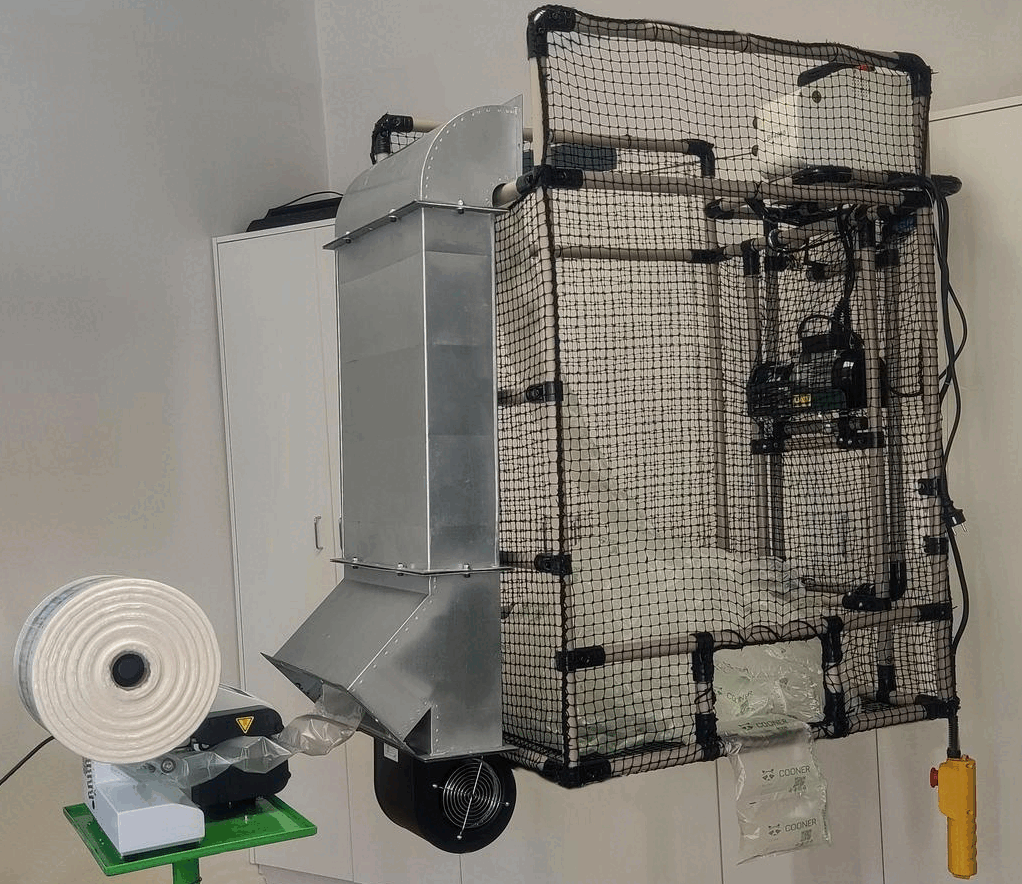
- Filling delivered to the bin via air duct.
- Automated start
- Transport of pillows over longer distances
Couldn't find what you were looking for?

